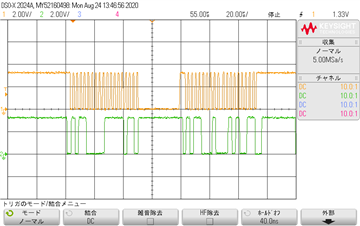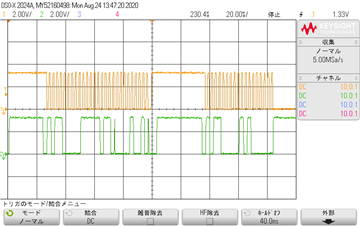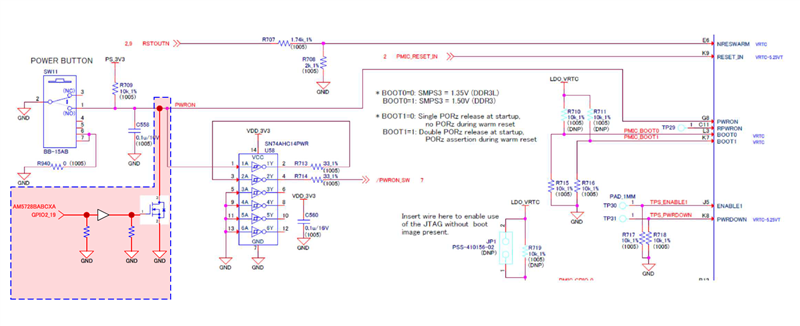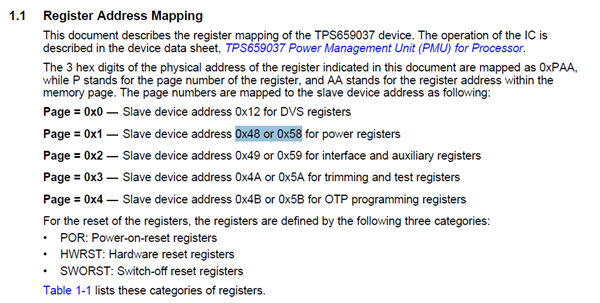Other Parts Discussed in Thread: TMDSEVM572X, , TMP102, AM5728
In our custom board based on the TMDSEVM572X evaluation board, an error that the power could not be turned off, happend to our customer enviroment.
In the debugging of this matter, repeated turning power on and off in our custom board. they met 1-time occur in about 80-times power on/off test.
(In this on/off test, power on is performed by push botton (PWRON pin to low). And power off is performed by Linux shutdown command (DEV_ON bit to 0).)
When this error occur, the following two lines that do not occur during normal operation, occur at the end,
[ 69.922953] palmas 0-0058: Unable to write PRIMARY_SECONDARY_PAD2 -11
[ 69.929423] palmas_power_off: Unable to write to DEV_CTRL_DEV_ON: -11
After that, the power of the device will not be shutdown due to the infinite loop of the following two lines.
[ 70.959836] omap_i2c 48070000.i2c: controller timed out
[ 70.989835] thermal thermal_zone5: failed to read out thermal zone (-110)
Could you tell me the cause of this loop and the workaround?
Linux and U-boot versions
Linux version 4.9.69
U-Boot 2017.01
Build in Yocto environment
Regards,








